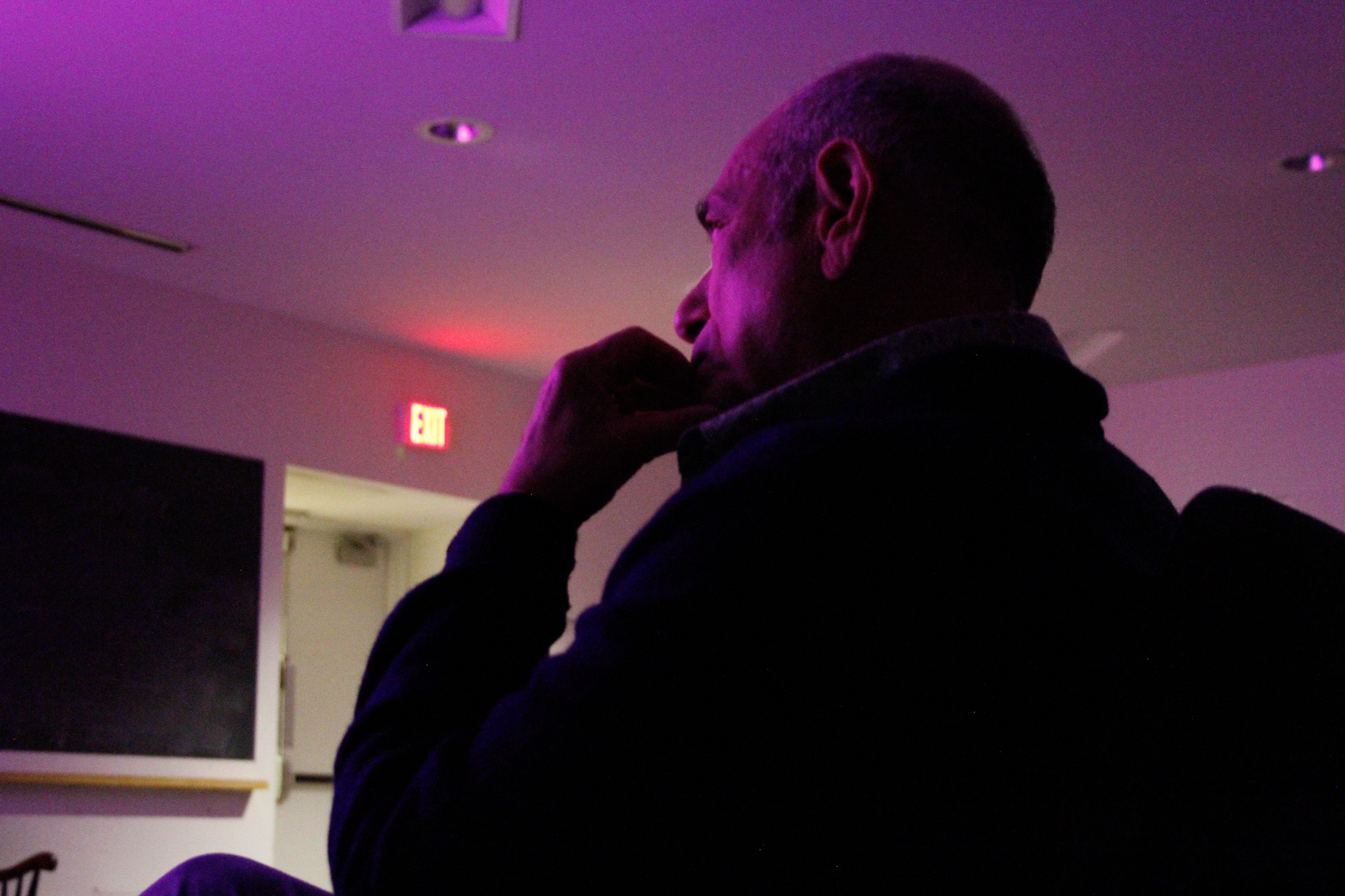David Dorfman Dance comes to campus with “truce songs” screening and workshop
November 21, 2025
 Martina Tognato Guaqueta
Martina Tognato GuaquetaOn Monday evening, students, faculty and community members gathered in the Visual Arts Center for a screening and discussion of truce songs, the latest work by the dance choreographer David Dorfman. The event followed an afternoon workshop led by members of David Dorfman Dance (DDD), which introduced participants to the company’s collaborative, improvisational approach.
Before the screening, Dorfman traced his career arc and outlined the artistic values that have shaped his work. A longtime professor at Connecticut College, where he earned his MFA in 1981 and later taught for over 20 years, Dorfman said his aim has always been to make postmodern dance accessible and emotionally resonant.
Since founding DDD in 1987, the company has toured globally, performed at major New York venues and earned eight Bessie Awards. The company has remained committed to what Dorfman calls “radically humanistic” work grounded in community engagement and experimentation.
“If we can get the whole world dancing,” Dorfman said, “we can make a more gentle world. If you’re dancing, you’re not hurting anyone.”
The evening began with excerpts from two earlier works. “(A) Way Out of My Body” emerged from what Dorfman described as recurring out-of-body experiences during the turbulence of recent years, while “Underground (2006)” drew inspiration from protest movements of the 1960s and 70s. These selections framed truce songs as part of a longer exploration of conflict, community and embodied resistance.
The concept of “truce” itself captured Dorfman’s attention precisely because of its inherent instability.
“I’m attracted to concepts that have problems built in them,” he said. “‘Truce,’ to me, has a problem built in because it’s synthetic. People have a truce for a weekend…, and then we’ll go back at it.”
The piece examines truce at three intertwined levels: with the self, with another individual and with larger political or social systems. While these structures may be abstract, Dorfman emphasized that the work’s emotional grounding always returns to lived experience.
Movement in truce songs shifts between athletic force and tenderness. Dancers collide, lift, fall and collapse in what Dorfman described as a practice of embodied honesty. He attributed this physical intensity to his athletic background while noting his effort to bring emotional openness to the work.
Humor also plays a role. “I like to make people laugh at least once in a production,” he said. “Sometimes we take ourselves hyper seriously in dance.”
During the discussion, audience members observed a sense of propulsion that characterizes the choreography. Dorfman attributed this intensity to what he called “rarefied” performance time, where each moment carries heightened significance.
When asked about the relationship between violence and intimacy in his work, Dorfman said the two sensations frequently overlap in both dance and life. What might appear aggressive externally, he explained, can be rooted in trust or connection among performers. Dance provides a space where intensity can be expressed safely.
“If we can express our anger and rage … but do it in a way that approaches intimacy more than violence,” he said, “then it’s almost therapeutic.”
The event was organized largely by Jack Twining ’27, a leader of the Bowdoin Moving Company club. Twining encountered Dorfman at a winter intensive in New York and recalled being inspired by his approach to creativity and particularly the idea of embracing creation without self judgment.
Twining and fellow organizers Daria Volkova ’27 and Ray Naomi Mitchell ’28 invited Dorfman as the club’s first guest artist because his work felt relevant to students.
“He’s not afraid to create work that’s fast, political and interdisciplinary,” Twining said. “It’s very person-centered art.”
When asked what he hoped students would take away, Dorfman emphasized persistence and presence over perfection. He spoke candidly about the realities of a long creative career at 70 years old, noting that he still faces rejection regularly in his life.
“Persistence, presence … thinking deeply about how you want to make things better—those are the things that can be most gratifying,” he said in an interview with the Orient.
He encouraged students to see creativity and peace building as ongoing practices rather than fixed achievements. That belief—that peace is temporary, imperfect and worth pursuing repeatedly—echoed throughout the evening and within truce songs itself, where collisions turn into embraces and exhaustion softens into stillness.
“I’d like students to see folks who are in it for the long run,” Dorfman said, “because it’s actually a long-term investment.”

Comments
Before submitting a comment, please review our comment policy. Some key points from the policy: